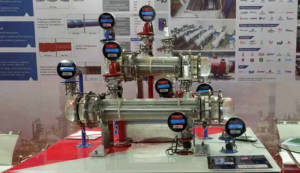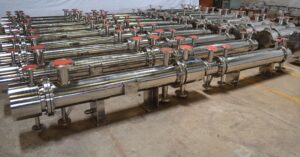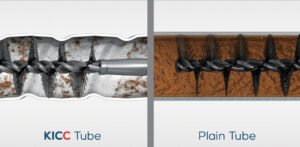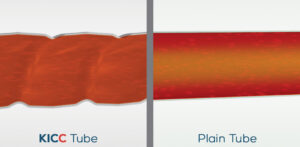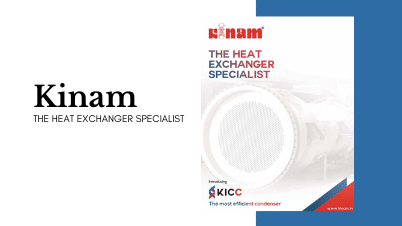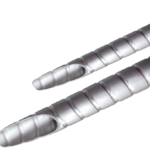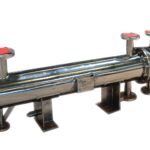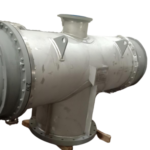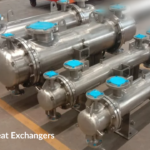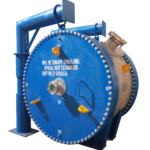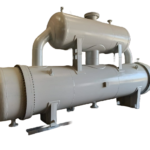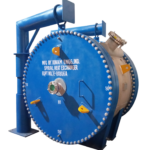In a previous Blog, we went through the various reasons why Corrugated Tube Heat Exchangers are better than traditional Shell & Tube Heat Exchangers.
In this blog, we go through the numerous benefits of adopting Kinams KICC Corrugated Tube Heat Exchangers.
Why KICC?
Through extensive research Kinam Engineering has developed six different corrugation profiles. These profiles have different pitch, depth and angle of corrugation optimised for different applications. Kinam has developed it’s proprietary software Pro HE which helps in designing these heat exchangers with the most suited profile.
This has been possible due to the test rig created in-house for continuous research and development.
The Test Rig offers a closer view of the KICC impact
Due to the KICC technology, in most condensing applications the heat transfer area is reduced by 50 %. These heat exchangers can be manufactured in various MOC’s like Hastelloy, Titanium, Duplex, Super Duplex, Inconel, Monel, Cu-Ni alloys & all grades of stainless steel.
It offers the following advantages:
- Higher Heat Transfer Coefficient
- Reduced Heat Transfer Area (upto 50%)
- Economical (Reduced cost by 25-30%)
- Compact (Smaller Footprint)
- Reduced Fouling
- Dropwise Condensation
- Uniform Temperature Distribution
- Lower Maintenance (Longer Running Time)
Higher Heat Transfer Coefficient
The helical indentation imparts two flow regimes to the fluid in the corrugated tube: a spiral flow at the core, and eddies at the periphery. As such the corrugated tubes induce turbulence in the fluid even at lower velocities at the peripheral layer. This results in a higher heat transfer coefficient. The two regime flow therefore enables a thorough mixing of the fluid, which ensures a homogenous fluid mass rather than a layered flow pattern. Corrugated tubes hence offer homogeneous temperature distribution in the tube.
Reduced Heat Transfer area/compact design
The corrugations, especially in condensing applications, provide a channel to the condensate layer formed on the surface of the tube, which then always provide a fresh new surface for the vapors to condense on. The resulting condensation is consequently drop-wise and not film-wise as in the case wi0th plain tubes.
Cost Saving
Reduction of size of the equipment has resulted in enormous cost savings over plain tube heat exchangers – in most cases the savings have been between 25–30%.Wherever exotic materials are involved, every square-meter reduction saves a lot of money.
Reduced Fouling
Additionally, the higher peripheral turbulence due to the corrugations prevents any suspended solids from settling on the tubes, which gives it a self-cleaning effect. This leads to a reduction in the amount of fouling, which in turn ensures longer running time without the need to stop for cleaning. Moreover, the response to CIP or mechanical cleaning by a brush/waterjet is much better when compared to a plain tube heat exchanger because of the discontinuous layer of deposition.
Dropwise Condensation
Drop wise condensation resulting in better condensation compared to thin film formation in plain tubes. The corrugation provides a channel to the condensate layer formed on the surface of the tube, always providing a fresh new surface for the vapours to condense.
Uniform Temperature Distribution
Even temperature distribution due to flow pattern, since new layers come in contact with the tube boundary.
“In short the corrugated tube heat exchangers are compact, economical in cost, efficient, versatile & offer lower deposition fouling leading to longer running times. These exchangers have lower operating costs, low utility requirements and hence offer a quick return on investments.”
Process applications for corrugated heat exchangers include heating and cooling, heat recovery, condensation, reboiler, vaporizer, economizer, sub-cooler, intercooler, aftercooler, pre-cooler, preheater, pasteurizer & other such applications.




